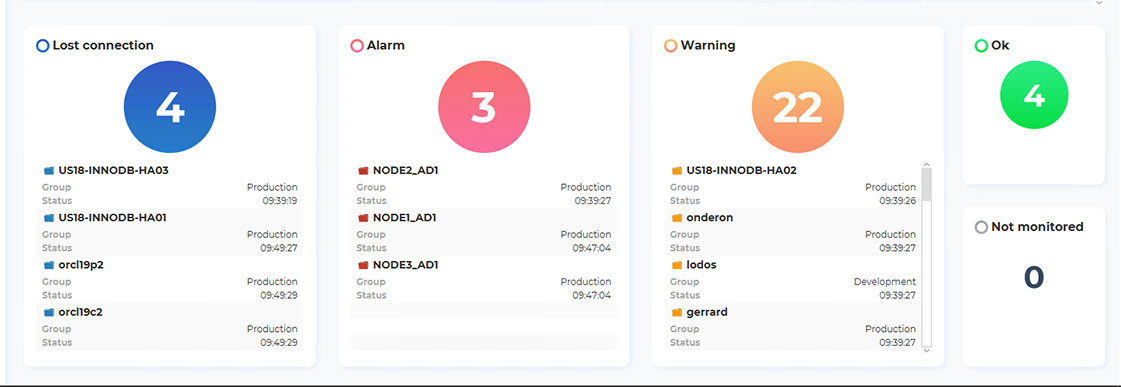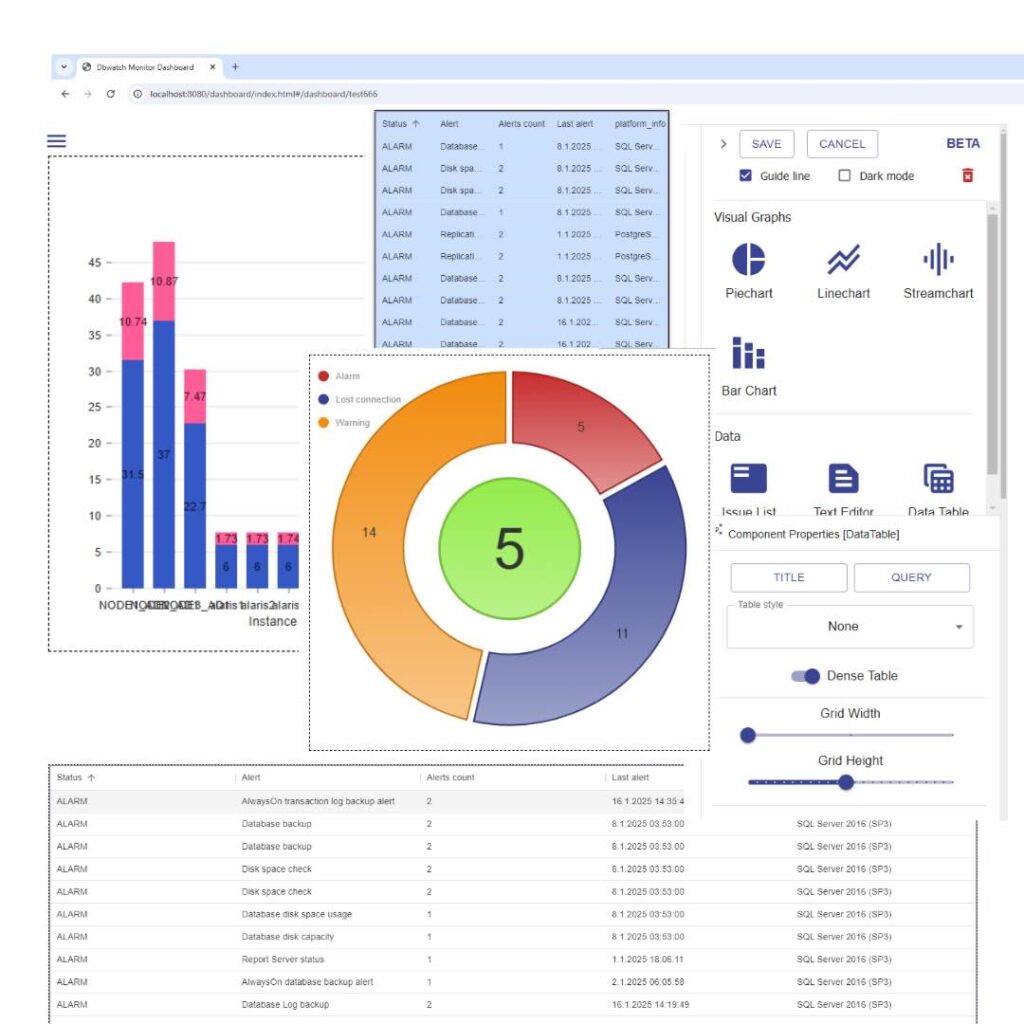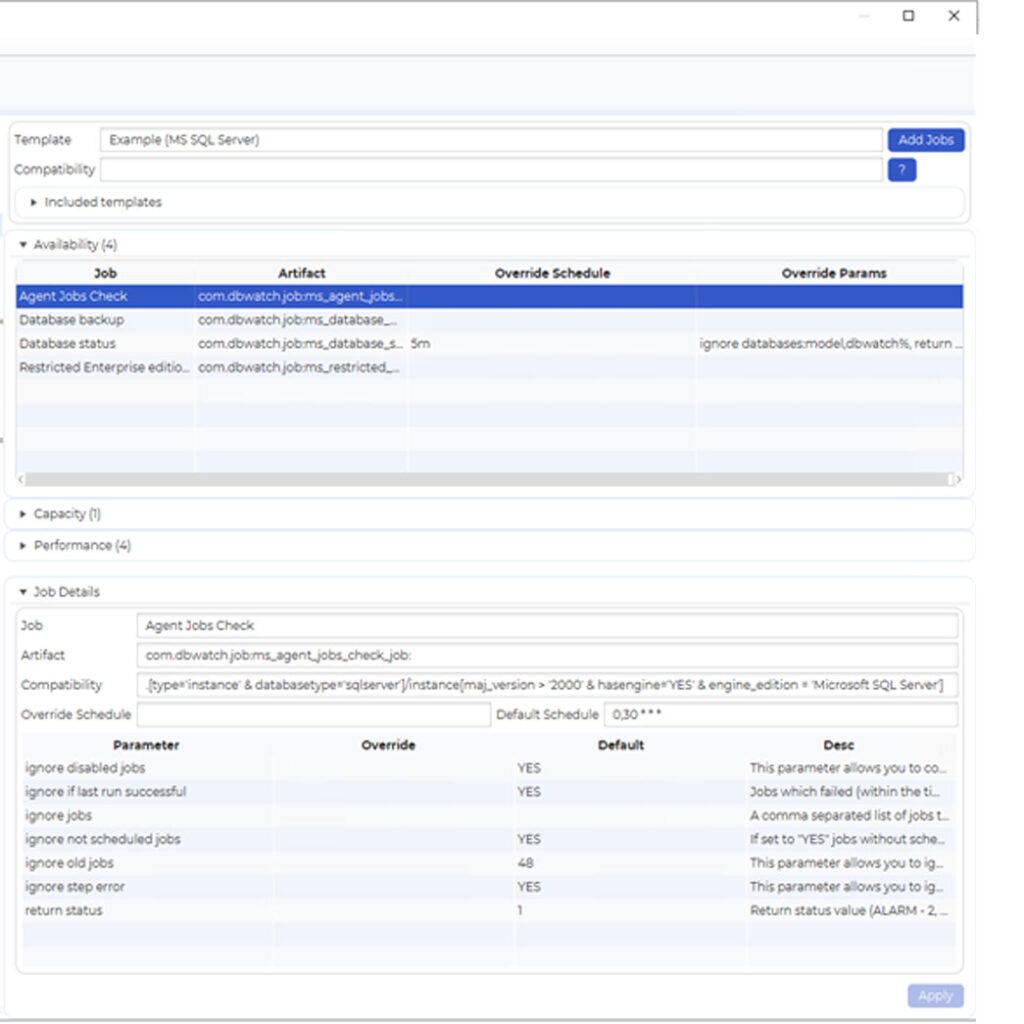
Eliminate Database Alert to Fix Time
How dbWatch Control Center speeds up database alert to fix time by creating a direct path from monitoring to action,
Multiple Site
See all database sites in one interface


Save yourself time, monitor all your databases in one screen. With a complete overview, you can work proactively and catch issues before they become problems.

Each dbWatch Control Center module has a dedicated dashboard. View the whole environment based on:
When you can see everything you can align the environment.


Configure once, deploy as often as needed. Instead of hours of fine tuning you have a fast solution.
Template based deployment provides consistent monitoring and maintenance. It’s especially useful for MSPs and enterprises with large environments.

See how dbWatch is more than a database monitoring tool. Talk to an expert about how dbWatch could work for you.
Give stakeholders bespoke dashboards or send health check reports directly to their inbox.
Understand how customized reports works, by watching our recent webinar.
"One client required weekly and monthly reports that used to take a full day each time. With dbWatch, we automated the process, reducing the workload from 60 days a year to zero. Now, reports are generated and sent automatically, saving three months of labor annually and allowing us to focus on more critical tasks."
Robert Prendin, CEO, RPDATA Solutions
Template Based Deployment
Switch easily between monitoring and maintenance.

Avoid the boredom of routine tasks.
Request a Demo and learn how dbWatch automations can give you time to focus on the tasks that need thought.
Instead of managing separate VPNs have all customers from a single place of control
Have a controlled outbound connection and avoid the exposure of in-bound VPNs
No more login failures or expired keys

Compliance is more than a checklist. It impacts your whole database environment. Control Center can help you reach and keep your security and compliance.
Read more about it in the Use Case Guide, or sign-up for the up-coming webinar.
Give developers DBA access to the development system.
Create a sandbox where they can see performance and queries but not make changes.

Talk to an expert about how and if Cloud Router is a good solution for your environment.

How dbWatch Control Center speeds up database alert to fix time by creating a direct path from monitoring to action,

Cross-platform database monitoring gives teams full visibility across mixed estates.

Explore five strong SolarWinds alternatives and find the software that best fits what your company needs.

Cross-platform database monitoring gives teams full visibility across mixed estates.

A Nordic-based Managed Service Provider for Databases added dbWatch Cloud Router to replace complex, unreliable VPNs with secure, scalable access.

Embriq added dbWatch to their tech stack for cost-effective, proactive database monitoring, efficient patch management, and faster issue resolution, helping
Save yourself time, monitor all your databases in one screen. With a complete overview, you can work proactively and catch issues before they become problems.

Each dbWatch Control Center module has a dedicated dashboard. View the whole environment based on:
When you can see everything you can align the environment.


Configure once, deploy as often as needed. Instead of hours of fine tuning you have a fast solution.
Makes consistent monitoring and maintenance, which especially helps with large MSPs.

Amazing... I run the software check alerts and pass details to the client. It maps and focuses on the problems... that need improvement
Tova